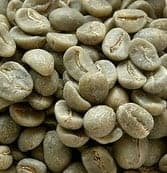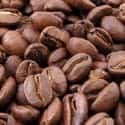Coffee prices have risen an astounding 90% in the last year and coffee roasters and shops, everyone from Folgers to Starbucks, are passing along the higher prices to customers.
On top of that, virtually all coffee available for purchase in the grocery store is past the peak of freshness (7-14 days from roasting).
Roasting your own coffee is a great alternative to paying too much for stale coffee. It is easy, can be done with a minimal investment ($0-$30), and costs half (or even less) of what buying roasted gourmet specialty coffee does.
It’s also a fascinating and enjoyable hobby that can broaden one’s horizons and palette. Ultimately, home roasting is the most economical way to drink the freshest, most flavor rich coffee. There are just a few things that you need to get and need to know in order to get started.
What You Need to Get to Start Roasting Coffee at Home
First you’ll need something to roast in. Hot air popcorn poppers make great coffee roasters as long as they have certain design features (a flat metal bottom and vents around the side that blow the coffee in a circular motion). You may have one already that will work ($0) or you can find a preferred model at your local thrift store ($3-5.00). If not, we have a selection of preferred model popcorn poppers for sale ($9-38.00) and there are also some popcorn poppers available new that work well for roasting ($20.00-30.00).
- Once you have a roaster (popper), all you need is green coffee. Single origin specialty coffee is important for making the home roasting experience worthwhile. There is a lot to learn about green coffee and its origins (and how region, climate, altitude and processing methods affect the properties, and therefore flavors, of the coffee), however, it is not necessary to know this before roasting. Roasting and tasting coffee is the best way to learn about the different flavors and characteristics of coffee from various regions of the world.
Tips For Productive Green Coffee Buying
- First buy a small quantity (12 oz.) of 2 or 3 different coffees.
- Then, roast each of them to a medium level roast (City+ to Full City).
- If you prefer the acidity, aroma and body (the overall flavor experience) of one of the coffees, buy 4 pounds of it and experiment roasting to different levels. This will give you a better understanding of how the flavors of the coffee develop in the roast.
What You Need to Know to Start Roasting Coffee
While home roasting is easy, you do need to have some basic knowledge before starting to roast. You should have a general grasp of the physical and chemical changes that are happening to the coffee as it is roasted, and should know at what point in the roasting process the coffee has reached the various roast levels that people prefer (from light to dark, City to Full City + and beyond).
The roast can be understood as a series of moments or phases which begin slowly and then progress faster as the roast continues.

Secondly, once dry, the coffee turns yellow and then brown as the sugars in the coffee caramelize.
Third we come to “first crack” when the cell structure of the coffee begins to break down and the coffee emits a loud cracking noise. When first crack comes to an end, the coffee has reached its lightest roast that is drinkable, a City Roast.
From this point the roast progressively darkens (from City to City +, City ++, Full City and Full City + roast). The roast has reached a Full City level when the coffee is on the verge of second crack. When second crack begins, a quick, loud snapping sound comes from the coffee (it makes a different sound than first crack so listen carefully) and the amount of smoke coming from the roast dramatically increases (you will want to roast in a well ventilated area or outside for this reason). It is important to pay attention to the different smells that the coffee emits throughout the roast. A few seconds into second crack is about the darkest level that we recommend roasting to, and at this point the coffee has reached a Full City +.
French and Italian roasts are darker than this, but the coffee is getting very dark very fast at this point. We recommend starting with lighter roasts and then experimenting with darker roasts.

The coffee will have the richest flavor when it is freshly ground just before brewing and is brewed with one of the preferred methods. The richness and complexity of the coffee’s flavor will amaze you and change how you think about coffee.
One final tip for economical roasting: Once your friends and family experience freshly roasted coffee, they will want more. Roast for a few friends and charge them a fair price (still well below the high prices of roasted specialty coffee) and you will cover your own costs, and who knows, maybe even make a small profit!
This is an article from Tom (my brother) over at ThePeoplesRoast.com. He runs a coffee micro-roasting resource where you can find roasters, green coffee, how-to videos and a blog that walks you through the process of roasting step by step. He also sells freshly roasted coffee (at good prices) for those less inclined to roast their own. I get coffee from him on a regular basis – and it’s great! Like him on facebook and follow them on twitter to stay informed about new posts and coffee offerings.
For a limited time you can use the following coupon code for $2 off any order: BMM$2
 First you’ll need something to roast in.
First you’ll need something to roast in. 
What would you say the average cost of green coffee is? It seems like most specialty stores cost more than going to a regular shop to buy a pound of coffee.
Green coffee prices vary. We offer 12 oz. for 6.00 (plus shipping) or 4 pounds for $25 plus shipping. (you can compare this with prices for example at Sweet Maria’s. Ours are lower for small quantities when you factor in shipping). It’s important to understand that this is single origin high quality specialty coffee. Comparative coffee freshly roasted will retail from around $15-$17/lb. The real issue is not how to get the cheapest coffee, it’s how to get the best coffee for the best price. This is an issue of value.
You can definitely find cheaper coffee (Folger’s, Maxwell House, etc.) but it’s important to know what goes into that coffee: machine sorted (in order to get out the sticks and rocks- really), fragmented coffee from all sorts of different places. Notice that these coffees never advertise their origin. I will literally never be able to bring myself to spend money on coffee like this again because it is of such low quality. This coffee has very little value to me.
Buying higher quality roasted coffee from the grocery store (Caribou, Starbuck’s etc.) is still quite a bit more expensive than buying green coffee and they are no longer fresh by the time you purchase and brew them. Many of these coffees are not single origin which, in my estimation, lowers their unique flavor and therefore value.
Buying good green coffee from a single origin you get the whole seed intact (=integrity of flavors preserved), you get hand sorted and carefully processed coffee and the distinctive flavors that make each coffee unique are preserved (not lost in a blend). When you roast that coffee yourself and drink it in the following days (a week and a half), you get such a rich experience that once you do it, it ruins other coffee for you.
So here is my summary of the quality/price relationship that results in a coffee’s value: You can pay the same amount that you would pay for mediocre or relatively stale coffee and then do some of the work yourself (roast your own!) and you will enjoy the best coffee you’ve ever had (higher value). Let me conclude with an analogy. Buying cheap coffee is like buying a cheaply made plastic chair that will break after a short time and end up in the garbage (low price, low quality). Roasting your own is like going out and spending about the same, or just a bit more on wood and supplies and building a high quality sturdy chair that will last (decent price, high quality) There is no question which results in the highest value product.
This is awesome! I went to Puerto Rico last year and bought some green beans for a friend who roasts coffee (http://www.417coffee.com). Never heard of using a popcorn popper before!!
Thanks! You should try it, it’s addicting (as addicting as the coffee itself).
This is an excellent way to roast coffee at home, and has begun many professional roaster’s careers (me included). just be sure to buy the BEST green, not anything cheap. Also, do NOT overload the popper (or roaster if you have one). You will cause a small fire or worse! Ask me how I know this! Good luck!
Very interesting and exciting! I love trying new things out and, until today, I had never heard of green coffee. I may have to add a quick update to my save on coffee post.